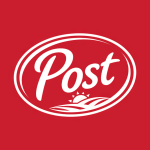Welcome to our dedicated page for Post Hldgs SEC filings (Ticker: POST), a comprehensive resource for investors and traders seeking official regulatory documents including 10-K annual reports, 10-Q quarterly earnings, 8-K material events, and insider trading forms.
Tracking grain costs across ready-to-eat cereals, monitoring egg margin swings in refrigerated retail, and following pet-food acquisitions all inside one company can turn Post Holdings’ SEC disclosures into a 300-page maze. If you have ever opened a Post Holdings annual report 10-K and wondered where segment profit actually sits, you are not alone.
Our AI-driven platform fixes that. Every Post Holdings quarterly earnings report 10-Q filing is parsed in minutes—key commodities, Weetabix currency impacts, and Foodservice volume trends are summarized so you can act quickly. Need real-time alerts for Post Holdings insider trading Form 4 transactions? We stream each Post Holdings Form 4 insider transactions real-time, highlighting executive stock transactions before the market digests them.
Here’s what you will find on this page:
- AI-powered summaries that turn dense footnotes into plain language—Post Holdings SEC filings explained simply
- Instant access to every 8-K material events explained, from plant outages to M&A announcements
- Side-by-side analytics that compare segments across filings for faster Post Holdings earnings report filing analysis
- Downloadable proxy statement details for Post Holdings executive compensation questions
Whether you are screening for Post Holdings insider trading Form 4 transactions, dissecting a Post Holdings annual report 10-K simplified, or just need to understand Post’s commodity exposure without reading the fine print, our expert analysis and real-time EDGAR feed keep you ahead. Stop hunting the filings—start understanding them.
Post Holdings’ Q3 FY25 (quarter ended 6/30/25) showed margin expansion and double-digit earnings growth despite muted top-line momentum. Net sales inched up 1.9% to $1.98 bn, driven by a 19% jump in Foodservice (egg & potato products) that offset a 9% decline in Post Consumer Brands cereal and pet food. Gross profit rose 3.3% to $596 m, expanding gross margin 40 bp to 30.0%. SG&A fell 4%, and amortization was stable, lifting operating profit 15.5% to $235 m.
Net earnings advanced 9% to $109 m; diluted EPS increased 17% to $1.79. For the nine-month period, revenue was flat at $5.91 bn while diluted EPS improved 6% to $4.60, reflecting higher margins and lower SG&A.
Balance sheet & cash flow: Cash rose to $1.06 bn (vs. $0.79 bn at 9/24). Long-term debt climbed to $7.35 bn after issuing $1.0 bn of 6.25% 2034 notes and drawing $400 m on the revolver; leverage covenant remains compliant (secured net leverage ≤4.25×). Operating cash flow was steady at $697 m; FCF absorbed $361 m of capex and $124 m for acquisitions. Share buybacks totaled $438 m YTD, shrinking basic shares 7% YoY.
Strategic moves: Closed $129 m purchase of Potato Products of Idaho (integrated into Refrigerated Retail & Foodservice). Subsequent to quarter-end (7/1/25) Post bought the remaining 39.5% of 8th Avenue plus preferred stock for $799 m and assumed $111 m of lease liabilities, bringing the business fully on-balance-sheet. Three cereal plant closures (Lancaster, Sparks, Cobourg) are progressing; cumulative restructuring charge $16 m with $5 m more expected.
Outlook implications: Margin gains, mix shift toward Foodservice, and accretive acquisitions support earnings, but higher leverage and flat nine-month sales warrant monitoring.
Post Holdings (POST) Form 4 filing: On 07/31/2025, director Dorothy M. Burwell was credited with 105.007 Post Holdings stock equivalents at an indicative price of $105.81 under the company’s Deferred Compensation Plan for Non-Management Directors. The notional value is about $11.1 k and lifts her deferred balance to 7,411.821 units.
The transaction is coded “A” (acquisition) and reported in Table II as a derivative security with no fixed exercise or expiration dates; units convert 1-for-1 into cash when the director separates from the board. Because the award is part of routine board compensation rather than an open-market purchase or sale, it has no immediate effect on share count or company cash flows and provides limited insight into insider sentiment.


